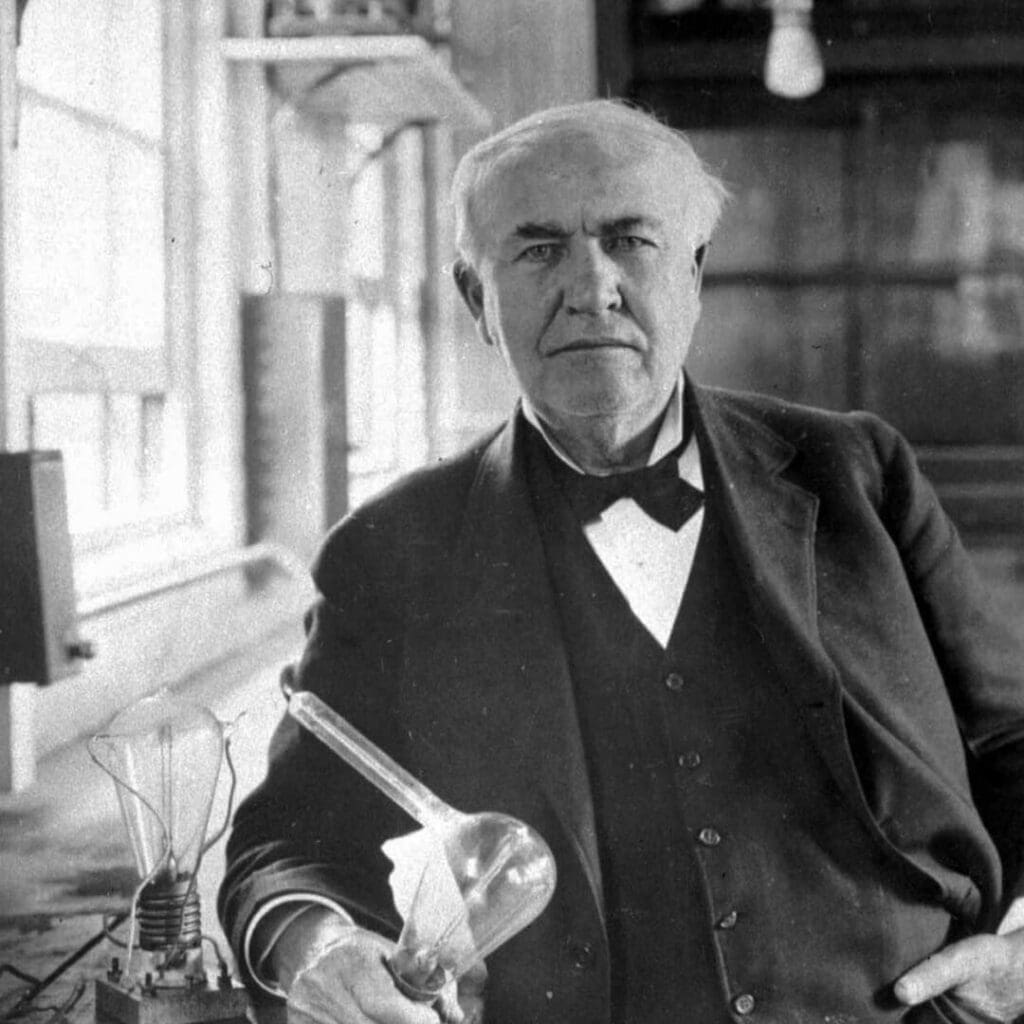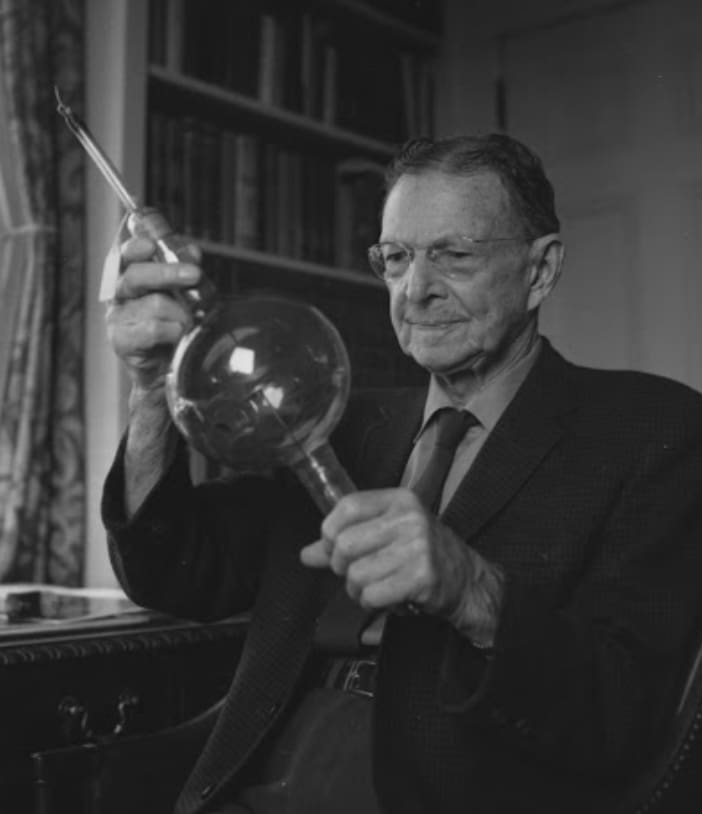The journey of light bulbs, including the 3-way variants, boasts a profound history that spans over a century and a half.
Throughout this period, innovators tirelessly worked on diverse bulb designs, aiming to illuminate our homes, workplaces, and schools effectively and virtually every structure we step into. While lighting is an integral aspect of our daily existence, we seldom pause to consider the fascinating evolution behind these crucial inventions. Dive in as we shed light on this captivating journey.
Table of Contents
- 3-Way Light Bulb: A Journey Through The History Of The Light Bulb
- LEDs: The Future Of Light Bulbs Is Here
- Related Content
3-Way Light Bulb: A Journey Through The History Of The Light Bulb
The light bulb, a pivotal innovation in human history, revolutionized how we live, work, and play. It turned night into day, extended productive hours, and symbolized human ingenuity.
But do you know how it became essential to our daily lives?
Early Beginnings Of The Light Bulb
The story of the light bulb began long before Edison. The journey started with Humphry Davy in 1802. He created the first electric light, the Electric Arc lamp, by connecting wires to a battery, illuminating a piece of carbon.
But while Davy’s invention was groundbreaking, its glaring brightness and short lifespan made it impractical.
Warren de la Rue took another significant step in 1840 by encasing a platinum filament in a vacuum tube, making it more efficient. However the high costs associated with platinum kept it from the masses.
The 1850s saw Joseph Wilson Swan introducing carbonized paper filaments, which promised more longevity but faced challenges related to vacuum quality and electricity supply.
Enter Edison And The Incandescent Light Bulb
Fast forward to 1874, when Henry Woodward and Mathew Evans from Canada patented a lamp with carbon rods in nitrogen-filled glass cylinders; while they couldn’t capitalize on their invention, a certain someone saw its potential. Enter Thomas Alva Edison.
Edison’s introduction to the world of lighting began in 1878. Although he wasn’t the sole pioneer of the incandescent bulb, his relentless approach to research and innovation set him apart.

By 1879, he had patented an electric lamp with a carbon filament. The real game-changer came when Edison and his team stumbled upon a carbonized bamboo filament.
This filament boasted a life of over 1,200 hours, paving the way for commercial light bulb production by 1880 under Edison’s company.
Continued Evolution Of The Light Bulb
In the 20th century, he witnessed continuous refinements to Edison’s creation. By 1906, General Electric Company had patented tungsten filaments, an improvement Edison had anticipated. Following suit, William David Coolidge further enhanced tungsten filament production by 1910.

Multiple innovations marked the subsequent decades:
- 1920s: Frosted light bulbs, adjustable power beam bulbs for vehicles, and the introduction of neon lighting.
- The 1930s: Flashbulbs for photography and the fluorescent tanning lamp saw the light of day.
- 1940s: The debut of the ‘soft light’ incandescent bulbs.
- 1950s: The advent of Quartz glass and halogen light bulbs.
- 1980s & 1990s: The lighting industry welcomed low-wattage metal halides and the popular compact fluorescent bulbs.
3-Way Light Bulbs History Explored
A tri-light called a 3-way lamp, employs a specialized bulb to emit light at three distinct intensities: low, medium, and high. This lamp necessitates a 3-way bulb, a corresponding socket, and a 3-way switch to function.
Each filament is powered at full voltage within these 3-way incandescent bulbs. This means that, unlike standard incandescent bulbs regulated by a dimmer, there’s no alteration in the light’s hue across the brightness settings.
Historically, lamps equipped with dual carbon filaments were crafted as far back as 1902, pioneering the concept of adjustable lighting intensities. So, 3-way light bulbs have been around for a long time.
The Demise And Legacy Of The Incandescent Bulb
Fast forward to 2023, the traditional incandescent bulb faces a significant setback. Sales are prohibited in the United States, though they can still be used.
The reason? Their inefficiency. Incandescent bulbs convert a mere 10% of their power into visible light, with the rest lost as heat.
LEDs: The Future Of Light Bulbs Is Here
The relentless quest for efficient lighting has led humanity from the flickering flames of ancient lamps to the soft, luminous glow of the modern LED. Today, as incandescent light bulbs cannot be sold, LED light bulbs are now the preferred light bulb.
As we strive for sustainability and energy conservation, the light-emitting diode, popularly known as the LED, is shining brightly, heralding the future of illumination.
What Is An LED?
A light-emitting diode is fundamentally different from traditional bulbs. Instead of using a filament or a gas, it employs a semiconductor to turn electricity into light. What’s unique about LEDs is their diminutive size and their ability to focus light in specific directions.
This characteristic does away with the necessity for reflectors and diffusers, which can sometimes trap light, reducing overall efficiency.
Efficiency Defined
LEDs aren’t just about fancy tech; they are about supreme efficiency. The efficacy of a bulb, essentially a measure of its efficiency, is calculated by dividing the emitted light (in lumens) by the power it draws (in watts).
To envision this in simpler terms, an ideally efficient light bulb that converts energy entirely into light would possess an efficacy of 683 lm(lumens)/W(watt).
Comparing Traditional Sources:
- Incandescent bulbs (60-100 watts) muster 15 lm/W efficacy.
- Compact Fluorescent Lights (CFLs), equivalent to incandescent, manage about 73 lm/W.
- LEDs, the prodigies of the lighting world, currently range from 70-120 lm/W, with a commendable average of 85 lm/W.
This superior efficacy makes LEDs not just a choice but a choice for modern lighting solutions.
A Glimpse Into History
Nick Holonyak, Jr., while working at General Electric in 1962, ushered in a new era in lighting technology by inventing the first visible-spectrum LED, showcasing it in red diodes.
This monumental achievement laid the foundation for subsequent innovations in LED colors. Soon after, the world saw the advent of pale yellow and green diodes.
Fueled by the promise and potential of LEDs, companies doubled down on refining the red diodes. As manufacturing processes advanced, these LEDs’ quality, brightness, and efficiency improved exponentially.
The red diodes started appearing in various applications, and their presence marked the beginning of the LED revolution.
Why LEDs Matter?
LEDs, beyond their efficiency, bring along a slew of benefits. They are light bulbs that are considered to be superior to the incandescent light bulb.
Here are why LED lights are superior light bulbs.
Longevity:
LEDs have a significantly longer lifespan than their incandescent or CFL counterparts. While an average incandescent bulb might last about 1,000 hours, LEDs can keep shining for up to 50,000 hours or more.
Durability:
With their sturdy build, devoid of fragile elements like glass or filaments, LEDs can endure jolts, shocks, and vibrations.
Cooler Temperature:
Unlike incandescents, which release 90% of their energy as heat, LEDs are much more relaxed, reducing the risk of burns or fires.
Color Range:
LEDs offer a vast spectrum of colors without the need for filters, providing flexibility in creating mood lighting.
Dimmability:
Modern LEDs come with dimming features, allowing users to adjust the brightness per their needs.
Eco-Friendly:
LEDs contain no toxic materials and are 100% recyclable, helping reduce carbon footprints.
The Future Of Lighting
LEDs represent more than a technological advancement; they embody the fusion of efficiency, longevity, and eco-friendliness. LEDs stand out as beacons of progress as the world moves towards sustainable solutions, signaling a brighter, greener future.
The era of LEDs isn’t coming—it’s already here. And with continuous innovation, the best is yet to come.
If you’re in the market to manufacture lamps or other lighting products, Mondoro is your go-to partner in Asia. We take pride in producing UL-certified lamps and are eager to discuss how we can best serve your needs. Let’s connect and explore how we can assist you further.
If you want to see how Mondoro can help you with your Ul Certified lamp needs, we would love to talk to you about how we can help you.
Find out more about how Mondoro can help you create, develop, and manufacture excellent home decor and furniture products – don’t hesitate to contact me, Anita. Check out my email by clicking here or become a part of our community and join our newsletter by clicking here.
Mondoro gives out a FREE Lookbook to anyone interested. You can receive a copy of our latest Lookbook by clicking here.
Listen to our Podcast called Global Trade Gal. You can find it on all major podcast platforms. Try out listening to one of our podcasts by clicking here.
Subscribe to our Mondoro Company Limited YouTube Channel with great videos and information by clicking here.
Related Content
High Point Furniture Market, Insider Tips And Guide
I have attended the High Point Furniture Market twice a year for almost 30 years. During this time, I have learned some of the best ways to attend the market, and what first-time or any market attendees should do. If this is your first time at the High Point Furniture market, most people do not realize how huge the market is, so you need to plan, be prepared, wear comfortable shoes, and know what you are looking to buy or accomplish at the market.
You can learn more by reading High Point Furniture Market, Insider Tips And Guide by clicking here.
Where Do Small Furniture Stores Get Their Furniture?
Many small furniture stores will buy their products wholesale from a wholesale furniture company. Many companies in the United States wholesale furniture to small furniture stores. Other small furniture stores may decide they want to manufacture or produce the products themselves. Successful stores have used both methods to source furniture for them to sell in their store.
By clicking here, you can learn more by reading our blog, Where Do Small Furniture Stores Get Their Furniture? by clicking here.
Where To Buy Home Decor Items For Retail Or Your Online Store?
If you are looking to start an online or retail store, one of the most significant issues that most people face is knowing where to buy the home decor items for their online or retail store. We have been producing home decor products for over 20 years; we have experience in knowing where to buy home decor items.
You can learn more by reading our blog, Where To Buy Home Decor Items For Retail Or Your Online Store?, by clicking here.


